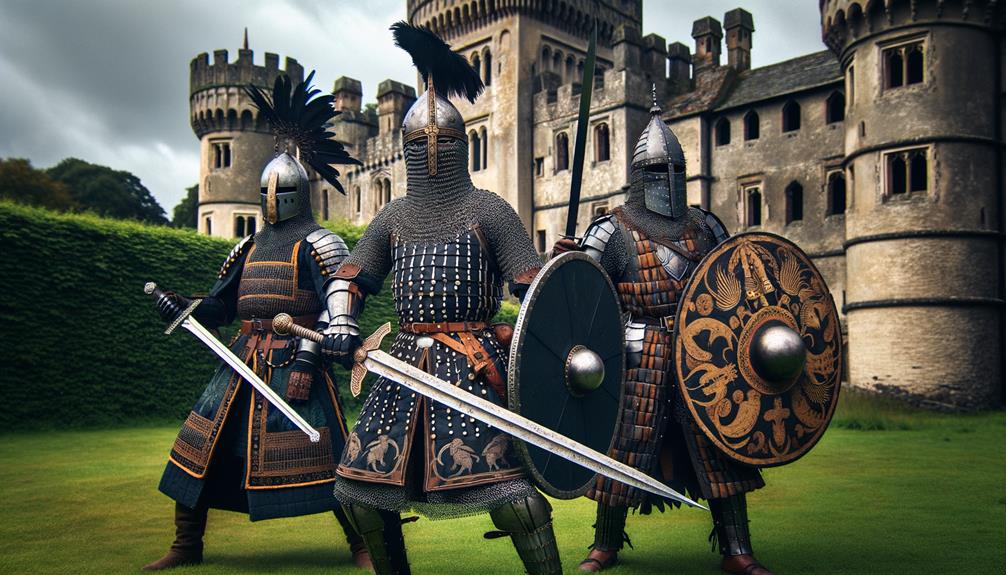The evolution of medieval armor is a fascinating reflection of how necessity drives innovation. From the early days of chainmail, offering flexible yet limited protection, to the sophisticated plate armor that gradually emerged, each development tells a story of adaptation and survival. The coat of plates, blending metal sheets with chainmail, marked a significant leap in defensive strategy. What truly fascinates me, however, are the ingenious advancements in articulation and hardened steel. But why did these intricate designs ultimately fade away? The answer lies in the impact of a surprising technological shift.
Chainmail: Early Protection
Chainmail, first invented in Iron Age Central Europe, marked a significant leap forward in personal protection on the battlefield. I find it fascinating that this early mail, initially crafted from bronze and later iron, became a cornerstone of military defense. The intricate interlocking rings provided a flexible yet formidable barrier against slashing and piercing attacks.
During the height of the Roman Empire, chainmail‘s effectiveness didn’t go unnoticed. Roman auxiliary troops and cavalry units widely adopted it, recognizing its balance of protection and mobility. Unlike cumbersome plate armor, chainmail required less labor to produce, making it more accessible to a broader range of soldiers. As the Roman Empire expanded, equipping vast numbers of troops with mail became feasible due to its ease of manufacture.
Wealthy lords of the era made sure their retainers were outfitted with chainmail, showcasing both status and a dedication to their protection. In contrast, ordinary levies had to make do with linen, wool, and wooden shields. As chainmail design evolved, influenced by Roman patterns and post-Roman innovations, it remained a testament to the ingenuity of early armorers. The enduring legacy of chainmail serves as a vivid reminder of human innovation in the face of conflict.
The Coat of Plates
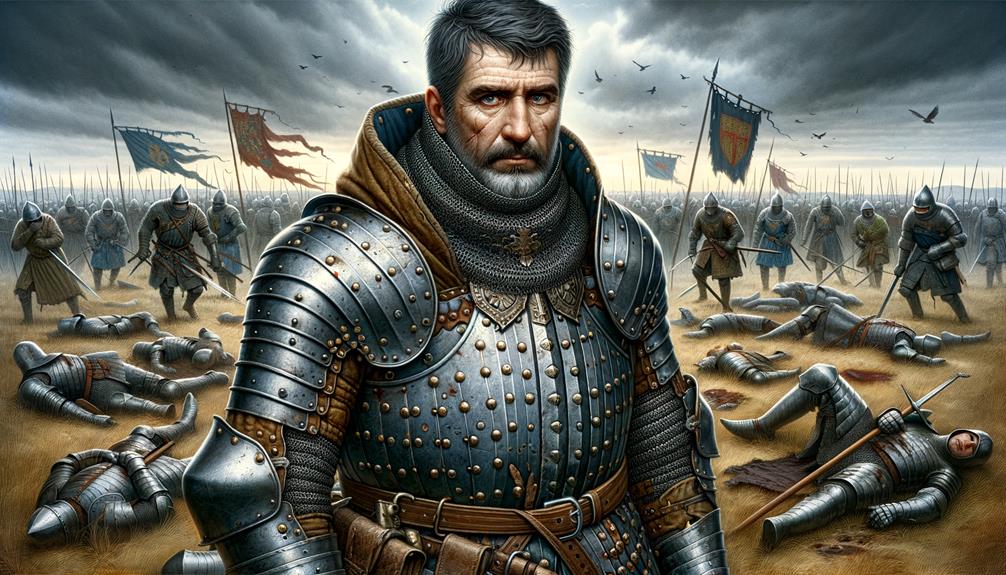
As medieval warfare intensified, the coat of plates emerged as a pivotal innovation in personal armor, combining metal plates with chainmail to offer unparalleled protection. I’m struck by the ingenuity of this creation, which marks a significant milestone in the evolution of medieval armor.
Skilled armorers crafted the coat of plates by attaching metal plates to a sturdy fabric or leather base. This innovative design provided superior defense against both cutting and blunt force attacks compared to traditional chainmail. When examining these pieces, their durability and flexibility stand out, reflecting the armorers’ skill and dedication to enhancing a warrior’s survivability on the battlefield.
During the late Middle Ages, as combat strategies and weaponry advanced, the coat of plates gained popularity. It represented a meaningful progression toward the sophisticated plate armor that would eventually dominate. The combination of materials and techniques in this armor showcases medieval ingenuity and the relentless pursuit of better protection.
The coat of plates, blending chainmail and metal plates, undoubtedly represents a significant chapter in the evolution of medieval armor, bridging the gap to full plate armor.
Advancements in Plate Armour
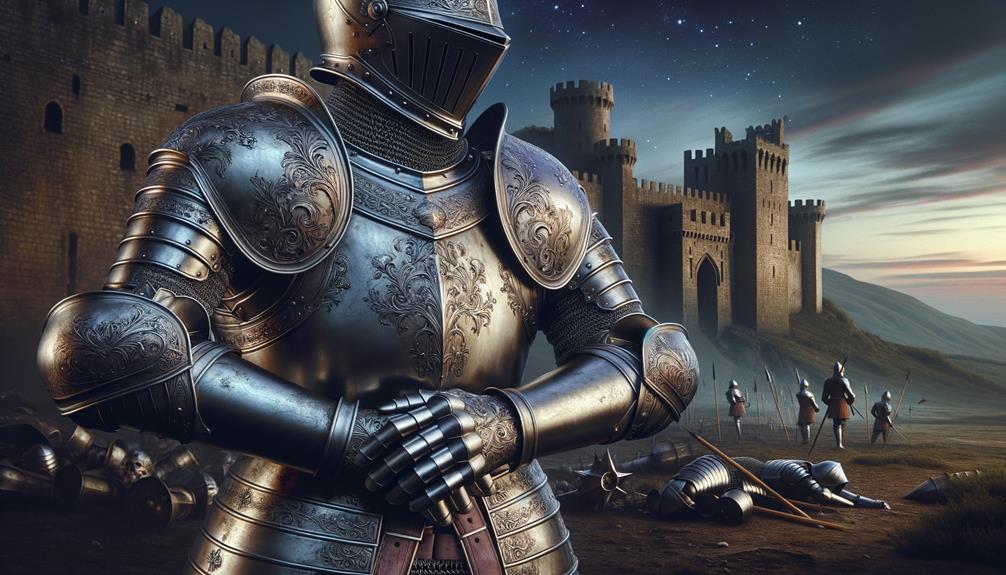
When I look at the advancements in plate armour, I’m struck by how improved material strength has transformed battlefield survivability. The focus shifted to articulation, allowing knights to move more freely with joints that bent and flexed. This potent combination of strength and mobility marked a significant leap forward in defensive technology.
Improved Material Strength
The significant advancement in plate armor’s material strength, achieved through innovations in hardened steel, marked a substantial leap in medieval combat protection. When I reflect on this development, I’m struck by how metallurgy transformed the battlefield. Hardened steel plates provided unmatched protection, their strength a formidable barrier against piercing and slashing attacks.
Imagine the ingenuity involved in taking steel, a metal already known for its durability, and refining it to create something even tougher. The process of hardening steel allowed for the creation of thinner yet stronger plates. These plates weren’t just robust; they were resistant to deformation and penetration, essential characteristics for armor intended to withstand the brutal realities of medieval warfare.
It’s fascinating to consider how these innovations not only enhanced protection but also redefined what was possible in armor design. The strength of these materials meant that knights and soldiers could move with greater confidence, knowing their armor provided thorough protection. This wasn’t just about surviving a blow; it was about transforming the very nature of combat, making each warrior a near-invincible force on the battlefield. The leap in material strength truly transformed the era’s approach to defense and survivability.
Articulation and Mobility
The brilliance of medieval armor truly shines through its intricate articulation, allowing knights to move with remarkable agility. It’s fascinating to observe how the joint design in plate armor enabled unparalleled mobility. Articulated plates, meticulously crafted to overlap at the elbows, knees, and other critical joints, provided much-needed flexibility. This ingenious setup guaranteed that a knight could bend and twist without compromising protection.
The integration of hinges and straps was a crucial aspect of this design. These elements worked in harmony, offering a range of motion that was essential during the heat of battle. Imagine a knight wielding a sword or spear, the armor moving seamlessly with each strike or block. The balance between protection and freedom of movement was exceptionally well-executed.
In addition to combat on foot, this advanced articulation allowed knights to ride their horses with ease, maintaining control and maneuverability. The way these plates moved together was a testament to the innovation of the time. Articulation in plate armor wasn’t just about survival; it was about excelling in the intricacies of medieval warfare. The blend of protection and mobility defined a new era of knightly prowess.
Impact of Firearms
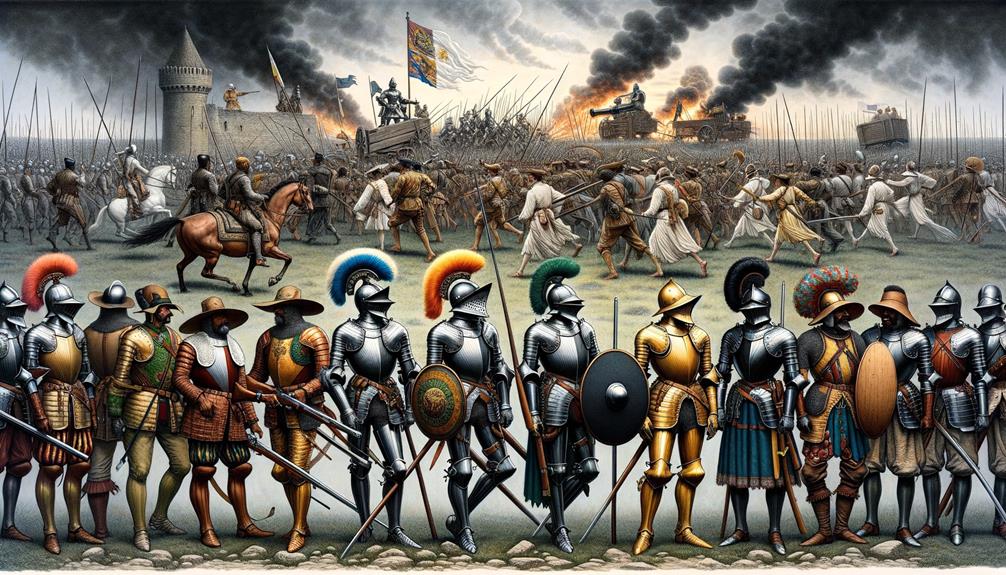
Firearms revolutionized the battlefield, rendering medieval armor obsolete. The penetrating power of firearms made even the sturdiest plate armor useless. This led to a rapid decline in the use of traditional armor. Soldiers and knights, once reliant on their armor for protection, found themselves vulnerable against this new technology. Firearms marked a turning point, exposing the limitations of medieval armor and necessitating innovative defensive strategies.
The production cost of high-quality armor skyrocketed, contributing to its decline. As firearms became more prevalent, only a select few could afford armor, relegating it to ceremonial use. Military tactics had to adapt; armies could no longer rely solely on armor. The focus shifted towards mobility and strategic positioning to counter the lethal efficiency of firearms.
Reflecting on this shift, it’s clear that the advent of firearms didn’t just change the tools of warfare – it transformed the entire approach. The battlefield became a place of rapid adaptation, where traditional plate armor was outdated, and new forms of protection and strategy were urgently needed.
Armour in Popular Culture
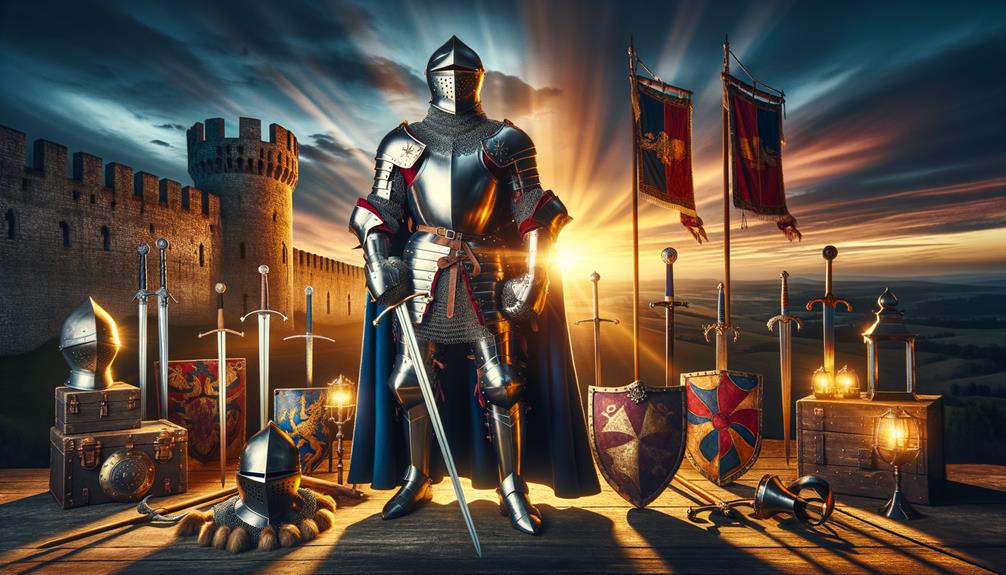
In popular culture, medieval armor has a way of captivating our imagination. Movies like ‘Braveheart,’ ‘Excalibur,’ and ‘Kingdom of Heaven’ transport us to eras where full plate armor and mail shirts were not just protection but symbols of valor and prestige. The portrayal of medieval knights, clad in meticulously recreated armor, evokes a sense of chivalry and heroism that continues to inspire audiences.
Video games like ‘Dark Souls,’ ‘The Witcher,’ and ‘Assassin’s Creed’ push the boundaries of design, blending historical accuracy with creative flair. These games not only feature armor that mirrors historical designs but also add fantastical elements that heighten their appeal. The influence of medieval armor extends to fantasy franchises like ‘Game of Thrones’ and ‘The Lord of the Rings,’ where armor becomes a defining trait of various factions and characters.
Historical reenactments and medieval fairs bring the texture and weight of medieval armor to life, allowing enthusiasts to experience the past tangibly. At cosplay events, participants often recreate intricate armor sets, channeling the artistry and spirit depicted in the Bayeux Tapestry and other medieval artworks.
Craftsmanship and Legacy
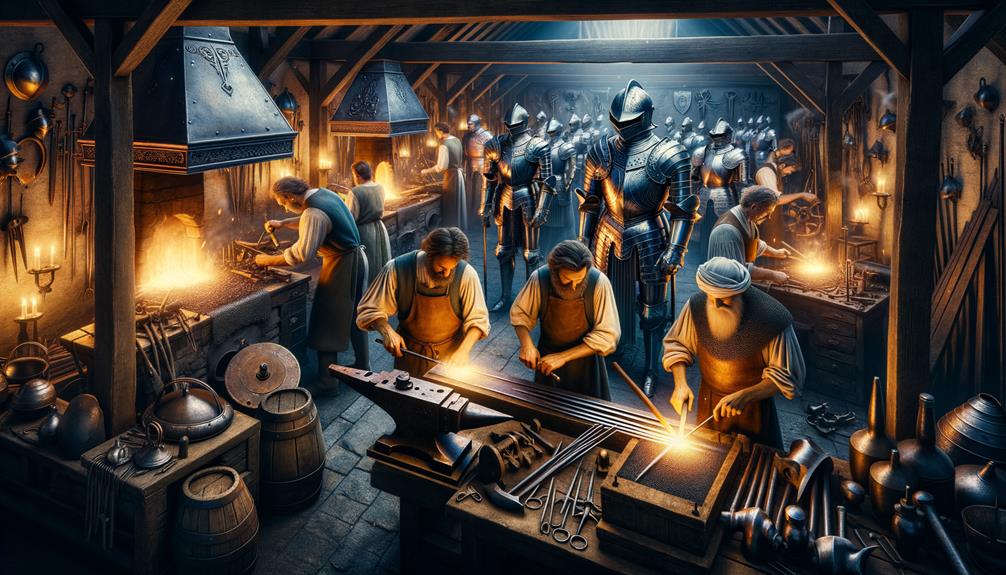
The intricate craftsmanship of medieval armor showcases the artisans’ exceptional skill and leaves a lasting legacy that continues to fascinate and inspire. Observing a piece of plate armor, one can’t help but marvel at the attention to detail and the sheer artistry that went into its creation. Each curve, engraving, and rivet served both a functional and aesthetic purpose, reflecting a blend of engineering and art.
Medieval armor has left a profound legacy that remains evident today:
- Movies and Video Games: Modern entertainment often draws on the iconic imagery of full plate armor, bringing the past into vivid, animated life.
- Historical Reenactments: Enthusiasts meticulously recreate and wear medieval armor, honoring the craftsmanship of centuries past.
- Museums and Collections: Armor pieces are preserved and displayed, allowing us to appreciate their intricate designs and historical significance.
- Fashion and Design: Elements of medieval armor influence contemporary fashion and product design, showcasing its enduring appeal.
Reflecting on this legacy, it’s clear that despite the decline of armor due to the rise of firearms and production costs, its craftsmanship continues to inspire innovation. The artistry of medieval armor offers a timeless testament to human ingenuity and creativity.
Frequently Asked Questions
How Did Medieval Armour Change Over Time?
Medieval armour underwent a significant transformation, evolving from simple chainmail to intricate plate armour. Each innovation, from coats of plates to brigandines, reflected a relentless pursuit of superior protection.
What Did Medieval Armor Actually Look Like?
When I look at medieval armor, I’m struck by the intricate chainmail mesh and the later, more refined plate armor with its artistic flourishes. Each piece is a testament to the skill of the craftsmen who created them, blending form and function in a striking, innovative design.
What Happened to All the Medieval Armor?
I often wonder what became of all that medieval armor. Most of it was repurposed or melted down, though some pieces are now museum treasures. Imagine, armor once worn by a knight now being historical relics!
What Was Early Armor Like in Medieval Times?
Early medieval armor was primarily composed of chainmail, which consisted of interlocked metal rings. Conical helmets were also a common feature. As armor evolved, innovations like the coat of plates emerged, combining chainmail with metal plates to offer significantly enhanced protection.




